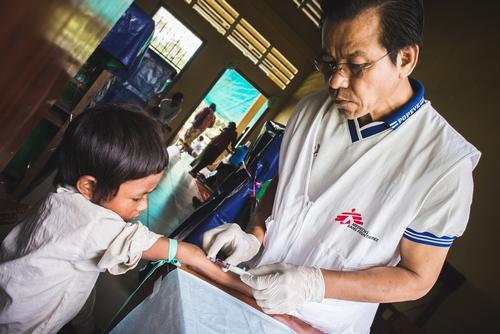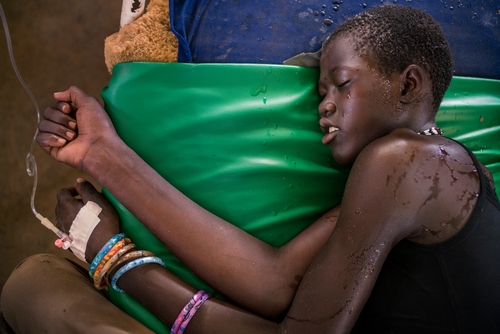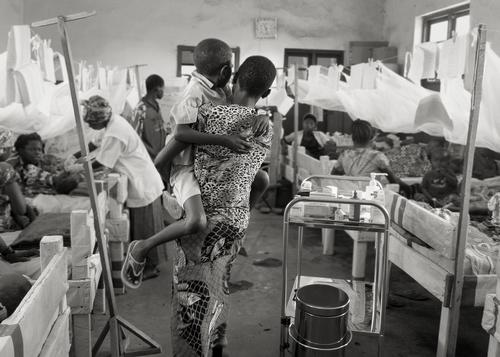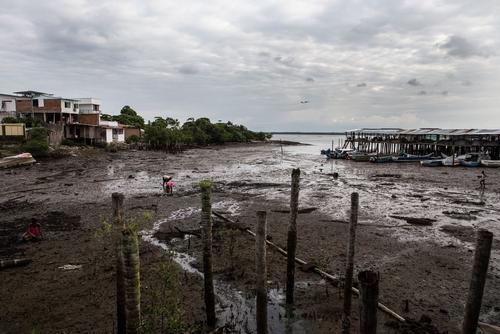This article was first published in Malaria Journal
Abstract
Background
Intensified efforts are urgently needed to contain and eliminate artemisinin-resistant Plasmodium falciparum in the Greater Mekong subregion. Médecins Sans Frontières plans to support the Ministry of Health in eliminating P. falciparum in an area with artemisinin resistance in the north-east of Cambodia. As a first step, the prevalence of Plasmodium spp. and the presence of mutations associated with artemisinin resistance were evaluated in two districts of Preah Vihear Province.
Methods
A cross-sectional population-based study using a two-stage cluster sampling was conducted in the rural districts of Chhaeb and Chey Saen, from September to October 2013. In each district, 30 clusters of 10 households were randomly selected. In total, blood samples were collected for 1,275 participants in Chhaeb and 1,224 in Chey Saen. Prevalence of Plasmodium spp. was assessed by PCR on dried blood spots. Plasmodium falciparum positive samples were screened for mutations in the K13-propeller domain gene (PF3D7_1343700).
Result
The prevalence of Plasmodium spp. was estimated at 1.49% (95% CI 0.71 – 3.11%) in Chhaeb and 2.61% (95% CI 1.45 – 4.66%) in Chey Saen. Twenty-seven samples were positive for P. falciparum, giving a prevalence of 0.16% (95% CI 0.04 – 0.65) in Chhaeb and 2.04% (95% CI 1.04 – 3.99%) in Chey Saen. Only 4.0% of the participants testing positive presented with fever or history of fever. K13-propeller domain mutant type alleles (C580Y and Y493H) were found, only in Chey Saen district, in seven out of 11 P. falciparum positive samples with enough genetic material to allow testing.
Conclusion
The overall prevalence of P. falciparum was low in both districts but parasites presenting mutations in the K13-propeller domain gene, strongly associated with artemisinin-resistance, are circulating in Chey Saen. The prevalence might be underestimated because of the absentees – mainly forest workers - and the workers of private companies who were not included in the study. These results confirm the need to urgently develop and implement targeted interventions to contain and eliminate P. falciparum malaria in this district before it spreads to other areas.
Authors
Philippe Bosman, Jorgen Stassijns, Fabienne Nackers, Lydie Canier, Nimol Kim, Saorin Khim, Sweet C Alipon, Meng Chuor Char, Nguon Chea, Lek Dysoley, Rafael Van den Bergh, William Etienne, Martin De Smet, Didier Ménard, and Jean-Marie Kindermans






